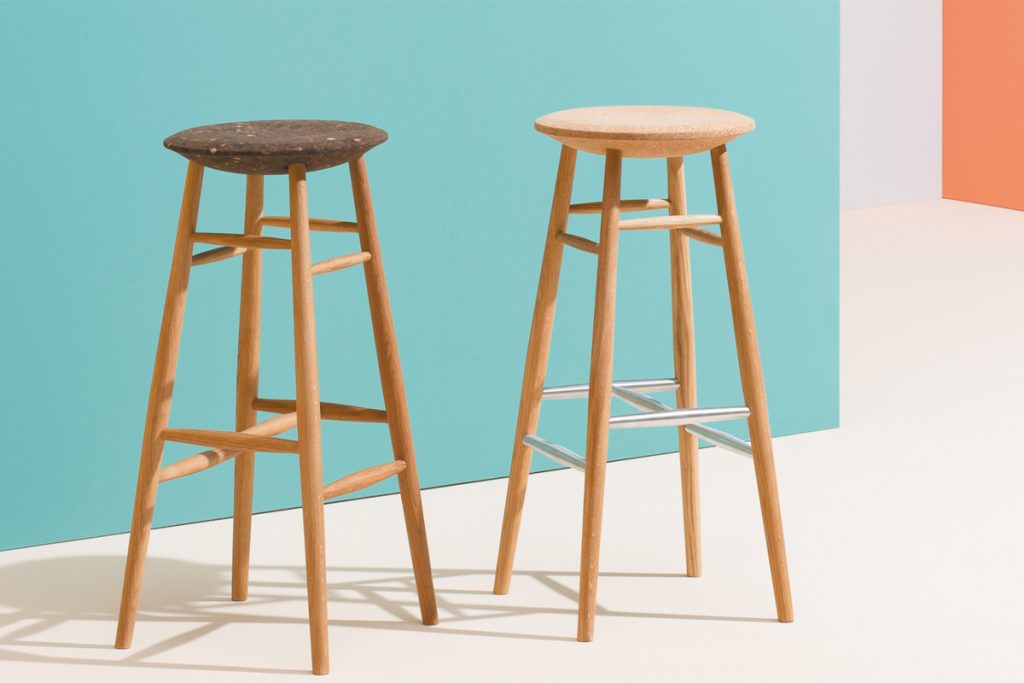Studio Visit: Daniel Michalik and Mark McGinnis
The cork furniture designer’s toy boats buoyed by pithy type and clever illustration

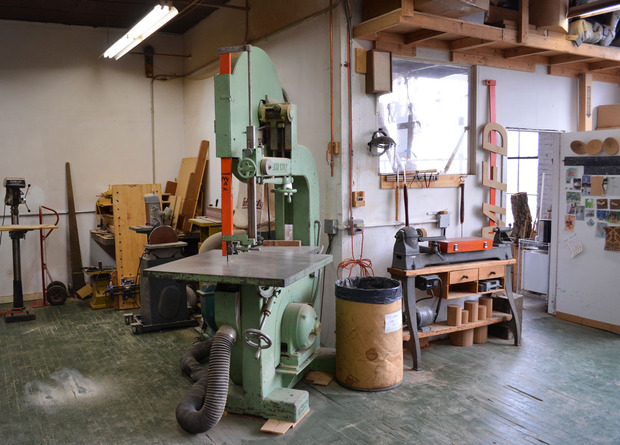
Through the large industrial windows of his studio in Brooklyn, designer Daniel Michalik looks out at a small harbor of the East River’s Maspeth Creek and the repurposed ferries that inhabit its quiet docks. It is an industrial but romantic view that seems to perfectly complement the world inside Michalik’s airy workshop, which is populated by mammoth band saws, high stacks of fragrant wood and workbenches decorated with prototypes. It seems only appropriate that it is here we meet Michalik along with his friend and collaborator, illustrator Mark McGinnis, to talk about their newest project, a series of cork toy boats.
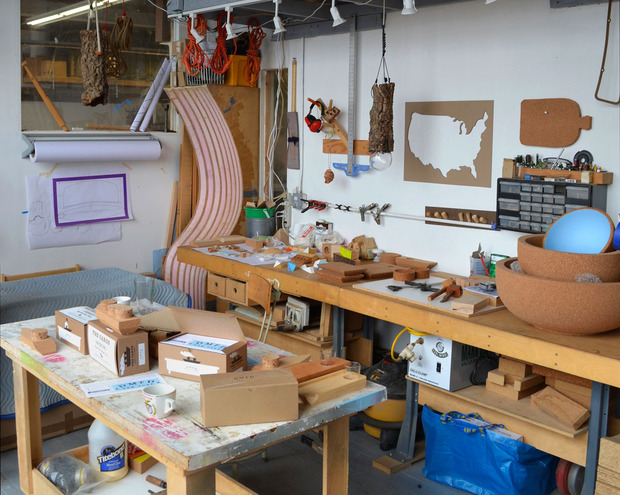
Known for his cork furniture, Michalik started experimenting with the material in early 2004 when he was still finishing his graduate degree at the Rhode Island School of Design. “To be honest, I think I found someone who could sell it to me very cheaply. I was working on an assignment that called for an unconventional material and it was the most affordable solution,” Michalik laughs when we ask what inspired him to use cork. “After that project, I saw its potential and kept trying to see where I could push it.” And push it he has.
In 2006 Michalik launched his first official cork piece, a lounger with a curved spine made possible by the flexibility of the material, and has continued to produce work that makes use of the sustainable material ever since. However recently Michalik has shifted away from furniture in favor of creating everyday objects that are more playful and have an accessible price point. The cork toy boats are the latest addition to this new object-focused collection.
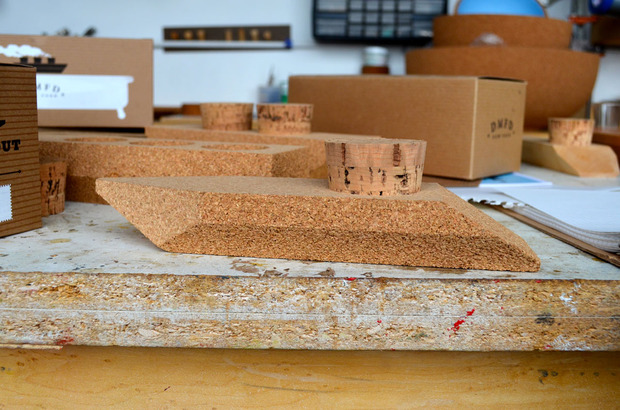
“I got the idea last summer when I was teaching a class at Haystack in Deer Isle, Maine. One day they invited all the teachers to go out on a lobstering boat. We had to sign waivers in this little boat house, and when I was there I spotted these little rubber boats in their shop,” Michalik explains, picking up his favorite, a small, plastic cargo ship. “I like them because they are kind of menacing instead of nostalgic. I liked that they were evocative but simple.”
Finding inspiration in the straight angles that comprised the small toys, Michalik set to work creating various simplified prototypes. “I struggled with how to imitate the stacked boxes on the cargo ship that I liked. I tried a couple of different solutions, but then I began to think about instead of building upwards, why not create interior spaces. That’s where the cork stoppers originated and the idea of creating these secret storage spaces,” he explains. “When I gave the first one to my three-year-old son, I realized that this was the perfect solution. The minimalism of the bridge gave him the freedom to use his imagination. The same spaces that I had originally envisioned as hiding compartments for contraband became the passenger seats of his bathtub crew.”
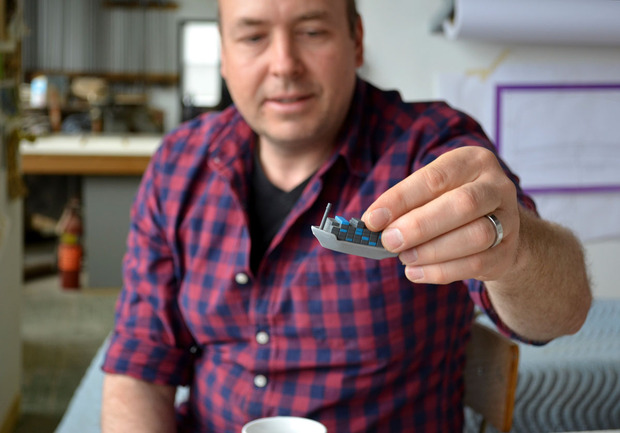
The Contraband collection debuted earlier this year at NYC’s 2013 Gift Fair, where it delighted but confused people at first. “The problem I found was people kept asking, ‘Are these toys or tabletop objects’ and I was like ‘Yes’,” Michalik jokes. “That’s where Mark came in.”
The two met at the previous year’s fair, where they bonded over a shared sense of humor and a design mantra that centers around self sufficiency. “Like me, Mark is someone who works within his means. So, when we started talking at the fair, there was an immediate chemistry,” explains Michalik. “When I am alone in my studio, I sometimes feel very remote. But, when I arrive at events like the gift fair and meet people like Mark, I am reminded there is an entire network of independent designers, just like me and that we all need to tap into this community more.”
“He liked my jokes. I hear I have excellent timing,” laughs McGinnis, a graphic designer-turned-illustrator. “But more seriously, I really admired Dan’s work and I jumped at the chance to work with him.”
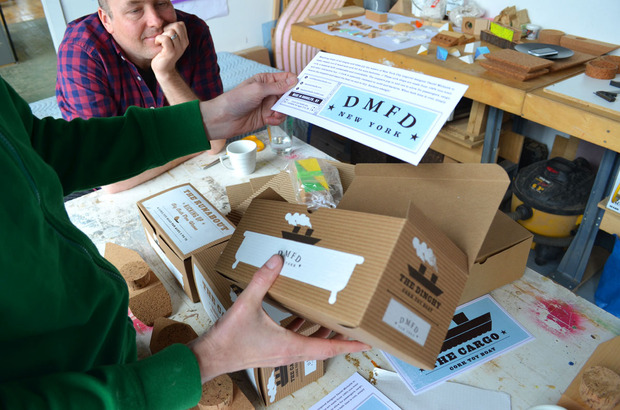
An organic opportunity for the designers to work together presented itself with the mixed reaction to Michalik’s new boats. “When I saw his boats, I knew what Dan was trying to go for and I knew that I could help him tell his story through the packaging” says McGinnis. “I knew iconography would be the key to expressing what these were.”
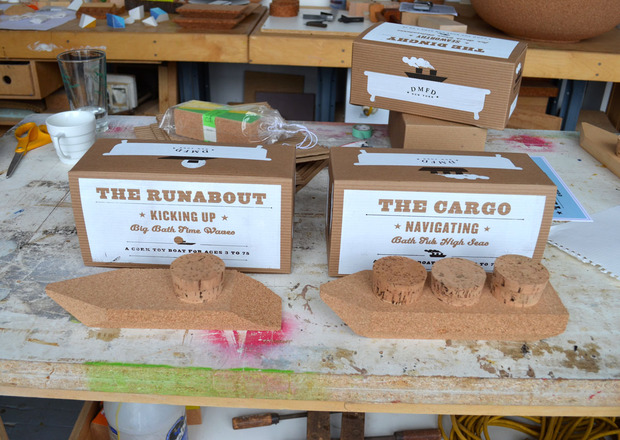
By using cheeky tag lines and clear graphics, and by highlighting the distinct shapes of the various vessels, McGinnis’ packaging underscores the playfulness and ingenious restraint of Michalik’s bath toys. Each handprinted in McGinnis’ studio, the boxes offer a transparent representation of the handcrafted toy waiting inside. “Once Dan saw my first mock up, his first reaction was ‘lets do more’. So, I started to add more,” smiles McGinnis. Bywords like “ages 3 to 78” help express that these are meant for everybody, but also cause people to pause for a moment with its offbeat nature. Curious details like these really showcase both designers’ creative thinking and draw attention to their individual talents.
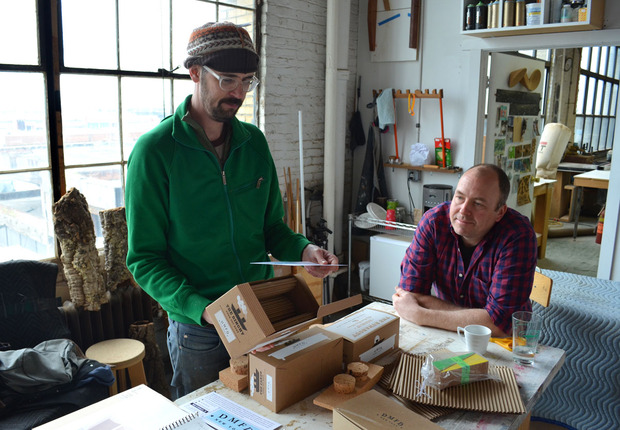
Admiring the eye-catching final product, both McGinnis and Michalik reflect on the project and praise the potential of independent artisans coming together. “I have this whole network of designers that travel in the same circles,” explains Mcginnis. “They are people who are creating these pieces from scratch and while they might be completely self-sufficient in some ways, everyone can’t do everything. These are objects whose stories need to be told visually and that’s what someone like me excels at. It only makes sense that designers would want to work directly with other designers especially when their products are so distinctive.”

“When I’m teaching my class on self-sufficiency at Parsons, we talk about designing products that are within your means, which, as a designer really breaks down to your skill level and what you can afford to make,” explains Michalik. “And, while this is how a designer creates a viable business, it doesn’t exclude the possibility of working collaboratively and tapping into the talents and resources of other designers. It is ironic that by encouraging designers to be more self-sufficient what we are really doing is building a community of capable individuals who can support each other.”
Visit Michalik’s website to purchase your own fleet for $32 each, or to learn more about the designer’s latest projects. And, if you are eager to hear more about self-sufficiency in design, you can register for Michalik’s upcoming summer design workshop at Boisbuchet.
Images by Kat Herriman
